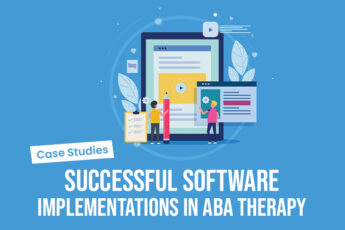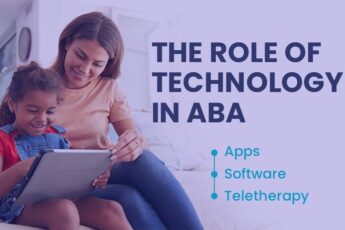Early intervention is crucial for children with autism spectrum disorder (ASD), and Applied Behavior Analysis (ABA) is a widely recognized and effective approach. However, the journey can be challenging, demanding consistent support and structured learning environments. Technology has emerged as a powerful tool to enhance ABA therapy, making it more accessible, engaging, and effective for both children and therapists.
Beyond the Traditional: Leveraging Technology for a Stronger Start
Traditional ABA therapy often relies on one-on-one sessions, requiring significant time and resources. Integrating technology into the process allows for more personalized and efficient interventions.
Here are some key ways technology is transforming early intervention with ABA:
1. Personalized Learning Experiences:
- Interactive Apps and Software: Platforms like “ABA for Kids” offer interactive exercises and games that cater to individual learning styles and skill levels. Children can practice communication, social skills, and other essential abilities through engaging activities, making learning fun and motivating.
- Adaptive Learning Systems: Technology enables real-time data collection, allowing therapists to track progress and adjust interventions accordingly. This dynamic approach ensures that the learning plan remains personalized and effective, catering to each child’s unique needs and pace.
- Augmentative and Alternative Communication (AAC) Tools: For children with communication challenges, AAC apps and devices provide a voice. Tools like “Proloquo2Go” or “GoTalk Now” allow children to express themselves using pictures, symbols, or text, fostering communication and social interaction.
2. Increasing Accessibility and Engagement:
- Remote Therapy Sessions: Telehealth platforms have revolutionized accessibility, enabling therapists to provide virtual sessions from anywhere. This eliminates geographical barriers, allowing children to access ABA therapy even in remote areas.
- Virtual Reality (VR) Therapy: VR simulations create immersive experiences, allowing children to practice social situations, sensory regulation, and other skills in a safe and controlled environment. VR technology can be particularly effective for teaching social skills, such as navigating social interactions and understanding nonverbal cues.
- Gamification: Integrating games and interactive elements into therapy sessions makes learning more enjoyable and engaging. This playful approach helps maintain children’s motivation and interest, leading to better outcomes.
3. Empowering Therapists and Parents:
- Data Collection and Analysis: Technology simplifies data collection and analysis, providing therapists with valuable insights into each child’s progress. This allows for informed decision-making and adjustments to the therapy plan, optimizing its effectiveness.
- Collaboration Tools: Platforms like “Google Docs” or “Zoom” facilitate seamless communication between therapists, parents, and educators. While these tools are helpful, building a custom tool tailored to specific needs can offer even more streamlined collaboration and data sharing. This could include tools for:
- Securely storing and sharing client data.
- Tracking progress and generating reports.
- Facilitating communication between therapists and parents.
- Creating and managing therapy plans.
- Parent Training and Resources: Online platforms and apps provide parents with readily available information and resources on ABA therapy, enabling them to actively participate in their child’s development.
Technology: A Bridge to Better Outcomes
The integration of technology in ABA therapy provides a range of benefits, leading to more personalized, accessible, and engaging interventions:
- Improved Outcomes: Personalized learning plans, tailored to each child’s needs, result in more effective interventions and faster progress.
- Enhanced Engagement: Interactive technology increases motivation and interest, making therapy more enjoyable for children.
- Increased Accessibility: Telehealth removes geographical barriers, allowing children from diverse locations to access ABA therapy.
- Empowered Therapists and Parents: Technology provides therapists with powerful tools for data analysis and collaboration, while parents can access resources and information to support their child’s journey.
Embracing the Future of Early Intervention
While technology is a powerful tool, it’s crucial to remember that it’s not a replacement for the human connection and expertise of qualified ABA therapists. Technology should be used as a complementary tool, enhancing the effectiveness of therapy and making it more accessible for all.
As technology continues to evolve, we can expect even more innovative solutions to emerge, further enhancing the impact of ABA therapy. This exciting future promises a brighter and more inclusive world for children with ASD, where technology paves the way for a strong start and a fulfilling life.
Conclusion
At DIBS, we are dedicated to developing innovative software solutions that empower organizations like those working in ABA therapy. We believe that technology plays a crucial role in delivering personalized and impactful interventions. By leveraging our expertise in software development, we aim to support the growth of ABA therapy and improve the lives of children with ASD.







Leave a Comment